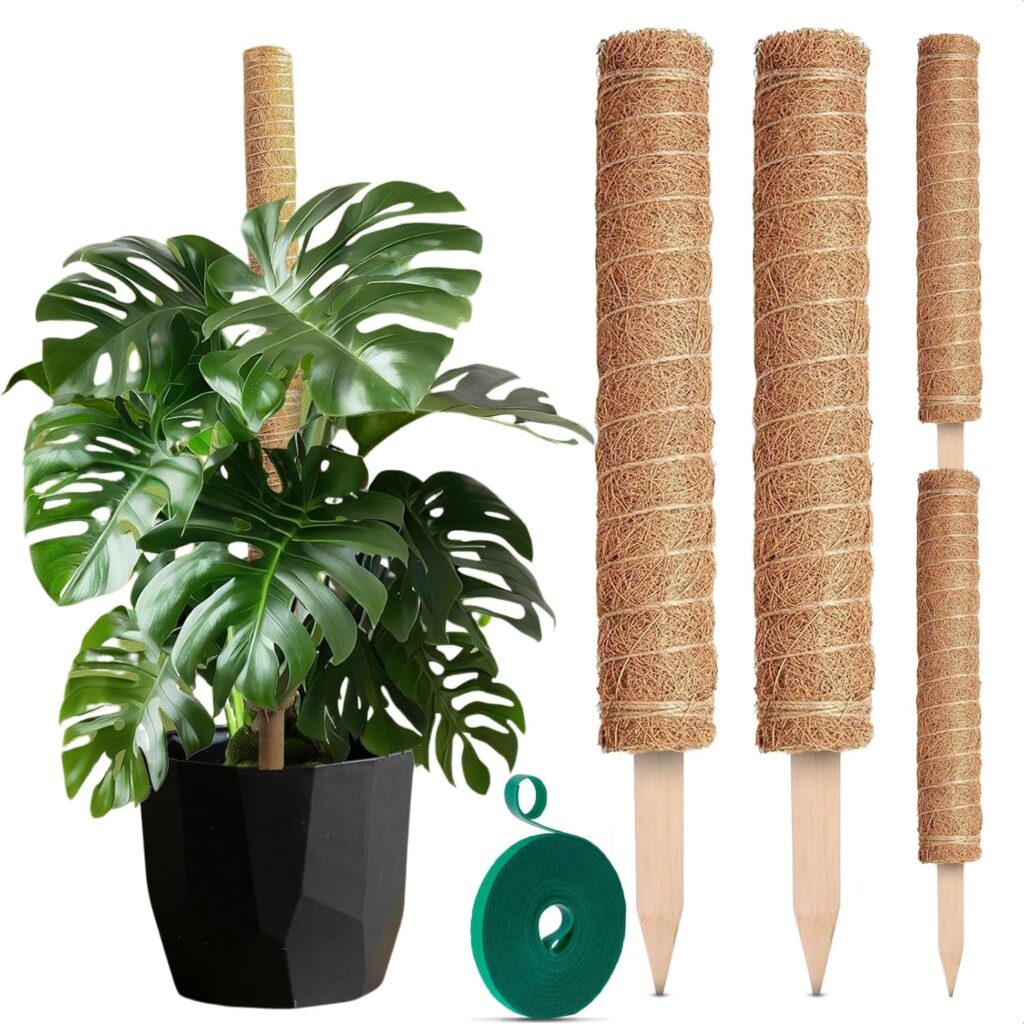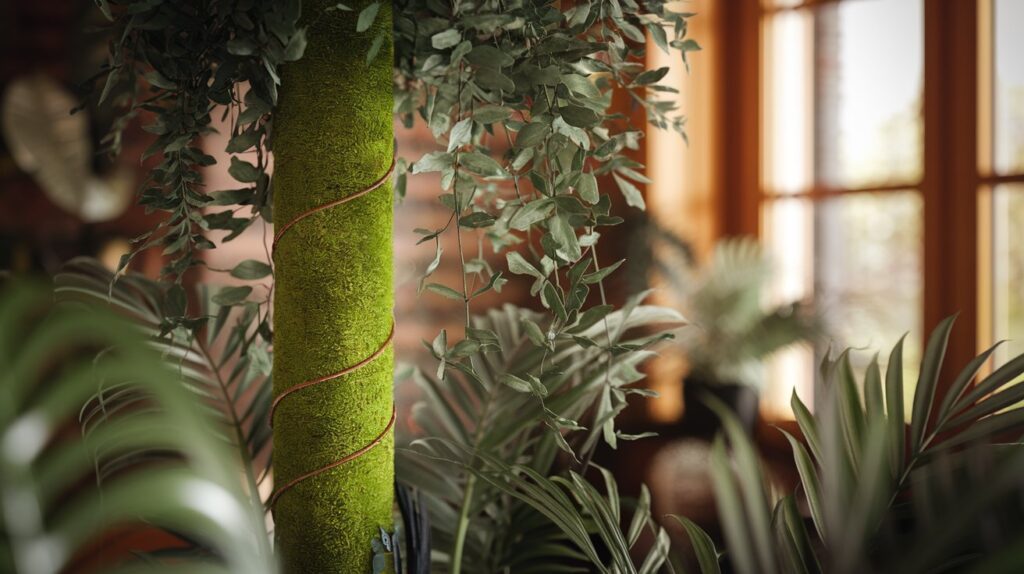What Is a Moss Pole and Why Is It Important for Plants?
If you’re a plant lover, you’ve probably heard about moss poles. But what are they exactly, and why are they so important? A moss pole is essentially a vertical support structure that allows climbing plants to grow upward, mimicking their natural habitat. These poles are typically covered in a moss-like material that retains moisture and provides a textured surface for aerial roots to cling to.
Table of Contents
Definition of a Moss Pole
A moss pole is a gardening accessory designed to support climbing plants. It’s usually made from materials like sphagnum moss or coconut fiber, wrapped around a sturdy core. The pole serves as a natural anchor for plants with vining or climbing tendencies, helping them grow upright instead of sprawling horizontally.
Materials Used in Moss Poles
Moss poles come in various materials, but the most common include:
- Sphagnum Moss: Retains water well, keeping the plant hydrated.
- Coconut Fiber (Coir): Durable and eco-friendly, though less absorbent than sphagnum moss.
Benefits of Using Moss Poles
Why should you consider using moss poles for your plants? They offer several advantages:
- Encourages Natural Growth Patterns
In the wild, climbing plants grow upward toward light by clinging to trees or other tall surfaces. Moss poles replicate this environment, allowing your plants to grow more naturally. - Supports Climbing Plants
Plants like Monstera and Philodendrons need structural support to thrive. A moss pole prevents stems from breaking under their weight and keeps your indoor jungle looking organized.
Types of Moss Poles Available
Whether you’re buying or making one, understanding the different types of moss poles is essential.
Natural Moss Poles
Natural moss poles, especially those made with sphagnum moss, are ideal for retaining moisture and providing a plant-friendly surface. These are best suited for tropical plants that thrive in humid environments.
Coir or Coco Fiber Poles
Coir poles are wrapped with coconut fiber and are highly durable. While they don’t retain water as well as moss poles, they are an eco-friendly choice that works well for less demanding plants.
DIY Moss Poles
Want to make your own moss pole? It’s easier than you think!
Tools and Materials Needed
- PVC pipe or wooden dowel
- Sphagnum moss or coco fiber
- Twine or fishing line
- Zip ties
Step-by-Step Guide to Making a DIY Moss Pole
- Soak sphagnum moss in water until fully hydrated.
- Wrap the moss around the pole evenly.
- Secure the moss with twine or fishing line.
- Insert the pole into your plant’s pot and anchor it securely.

How to Use a Moss Pole for Your Plants
Now that you have a moss pole, how do you use it effectively? It starts with selecting the right pole for your plant’s needs.
Selecting the Right Moss Pole
When choosing a moss pole, consider the size of your plant and its growth potential. For smaller plants, a short pole works, but larger, fast-growing plants will need taller poles. Always match the material to your plant’s moisture requirements.
Installing the Moss Pole in Your Pot
To install, insert the base of the moss pole firmly into the pot. Ensure it’s deep enough to prevent wobbling as your plant grows.
Attaching the Plant to the Pole
Gently tie the plant’s stem to the moss pole using soft ties or twine. Avoid tying too tightly to prevent damage.
Best Plants for Moss Poles
Not all plants need moss poles, but for those that do, the results can be stunning. Moss poles are particularly beneficial for climbing and vining plants that naturally grow vertically in their native habitats.
Common Climbing Houseplants
Some popular houseplants thrive when paired with a moss pole. These include:
- Monstera Deliciosa
Known as the Swiss Cheese Plant, Monstera Deliciosa naturally climbs in the wild. Attaching it to a moss pole encourages larger leaves with pronounced splits and holes. - Philodendron
Species like Philodendron Brasil and Philodendron Heartleaf love climbing. A moss pole helps them showcase their vibrant, trailing foliage more effectively.
Less Common Plants That Benefit
Other plants that can benefit from moss poles include:
- Pothos (Epipremnum aureum): Pothos helps display their variegated leaves beautifully.
- Hoya: While more delicate, these plants can use moss poles to maintain upright growth.
- Syngonium: These arrowhead plants flourish with support for their climbing growth habit.
Maintenance and Care of Moss Poles
A moss pole is not a “set it and forget it” accessory. Proper maintenance ensures it stays functional and continues to support your plant’s growth.
Keeping the Moss Pole Moist
A moist moss pole helps aerial roots cling and thrive. To keep it hydrated:
- Spray the moss pole with water during regular plant watering.
- For sphagnum moss poles, consider adding a drip system to ensure consistent moisture.
Replacing or Repairing a Moss Pole
Over time, moss poles can degrade. If the moss becomes dry and brittle or the pole loses stability, it’s time for a replacement. For DIY poles, simply rewrap fresh moss to prolong their life.
Cleaning and Reusing Moss Poles
To reuse a moss pole, disinfect it with a diluted bleach solution and rinse thoroughly. This prevents the spread of bacteria or pests to other plants.

Tips for Maximizing Growth with Moss Poles
Using a moss pole is just one part of fostering healthy plant growth. Combine it with these strategies for the best results.
Providing Adequate Light
Climbing plants often seek light as they grow. Position your plant and moss pole in a spot with bright, indirect sunlight to encourage upward growth.
Optimizing Water and Nutrient Delivery
A moss pole can help distribute water and nutrients more evenly. Consider watering the moss pole directly during feeding time, as this allows aerial roots to absorb nutrients efficiently.
Common Mistakes to Avoid
Moss poles can be transformative, but common mistakes can hinder their effectiveness. Avoid these pitfalls to get the most out of your setup.
Incorrect Placement
Positioning the moss pole too far from the plant’s base can make it difficult for the plant to latch on. Ensure the pole is as close as possible to the plant’s main stem.
Using the Wrong Type of Moss Pole
Not all moss poles are suitable for every plant. For instance, water-loving plants benefit from sphagnum moss, while less thirsty species may thrive with coco fiber poles.
FAQs About Moss Poles
How Often Should You Water a Moss Pole?
You should water the moss pole whenever you water your plant. For most tropical plants, this means keeping the moss consistently moist but not soggy.
Can Moss Poles Be Used Outdoors?
Yes, moss poles can be used outdoors for climbing plants. Just ensure the pole material can withstand the weather conditions in your area.
Are Moss Poles Necessary for All Plants?
No, moss poles are specifically for climbing or vining plants that require vertical support. Non-climbing plants don’t benefit from moss poles.
How Do You Attach a Plant to a Moss Pole?
Use soft plant ties or twine to gently secure the plant’s stem or aerial roots to the moss pole. Avoid tying too tightly to prevent damage.
What Is the Lifespan of a Moss Pole?
The lifespan of a moss pole depends on its material and maintenance. With proper care, a moss pole can last several years, though natural moss may need replacement over time.
Conclusion
Moss poles are a fantastic addition to any indoor garden, especially for climbing plants that crave vertical growth. By offering support and mimicking their natural environment, moss poles help your plants thrive while adding a unique, lush aesthetic to your space. With proper care and the right type of pole, your plants can grow healthier and more vibrant than ever.

